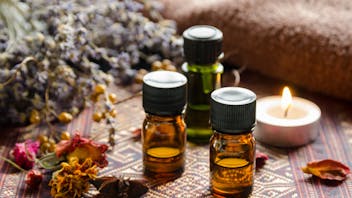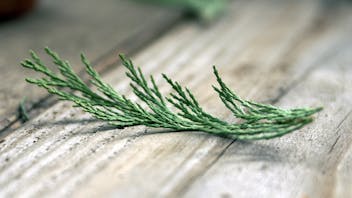Product Overview
Without doubt, our Champaca CO2 has a most unique scent quite unlike any other floral. Its rich sultry aroma is a velvety, suave, vanilla-sweet floral with warm, dense, peach/apricot-like notes and spicy tea- and hay-like undertones; the rich, sweet floral and tea/hay notes remain in the long drydown.
Michelia champaca is an evergreen tree native to the Philippines and the Indonesian islands, but now also grows in places far west of its origin – India, southeast China, Réunion, and Madagascar; the flowers are a beautiful deep orange-yellow, but vary in color according to locality, borne on medium-sized slender trees related to the Magnolias.[1] In many areas where it thrives, the flowers are used for ornamental purposes and for worship in temples. Champaca blossoms were and still are commonly used to make an 'attar' – regarded as a holy fragrance – by distilling the oil from the flowers directly into a receiver containing Sandalwood essential oil.[2],[3]
According to Jennifer Peace Rhind, the aroma of Champaca has a euphoric quality, perhaps similar to that of Jasmine or Neroli.[4] As cited in Guenther’s The Essential Oils, Champaca constitutes one of the most exquisite raw materials for perfumery.[5] – and we couldn’t agree more!
For flowers in general, CO2 extracts are preferred over solvent extracts and even some distillates for several important reasons. Some flowers, Champaca in particular, are too fragile to undergo distillation, so solvent and CO2 extractions are the only available options. Among other features, floral CO2 extracts are free of solvent residue; contain fewer waxes than their corresponding absolutes; are chemically more complex than distillates; and have fragrance profiles closer to that of the fresh flowers. Furthermore, numerous aromatic monoterpene hydrocarbons detected in CO2 extracts are not found in the essential oils and appear only as artifacts or decomposition products during distillation. [6]
1 Rhind, Jennifer Peace. Essential Oils – A Handbook for Aromatherapy Practice, 2012, p. 14.
2 Arctander, Steffen. Perfume and Flavor Materials of Natural Origin, 1960, p. 575.
3 Guenther, Ernest. The Essential Oils, Vol. V, 1952, p. 381.
4 Ibid, pp. 158-9.
5 Rhind, Jennifer Peace. Essential Oils – A Handbook for Aromatherapy Practice, 2012, p. 247.
6 Industry communication.
7 Rhind, Jennifer Peace. Essential Oils – A Handbook for Aromatherapy Practice, 2012, p. 247.
8 Ibid.
9 Arctander, Steffen. Perfume and Flavor Materials of Natural Origin, 1960, p. 160.
10 Tisserand, Robert and Rodney Young. Essential Oil Safety, 2nd ed., 2014, p. 245.



